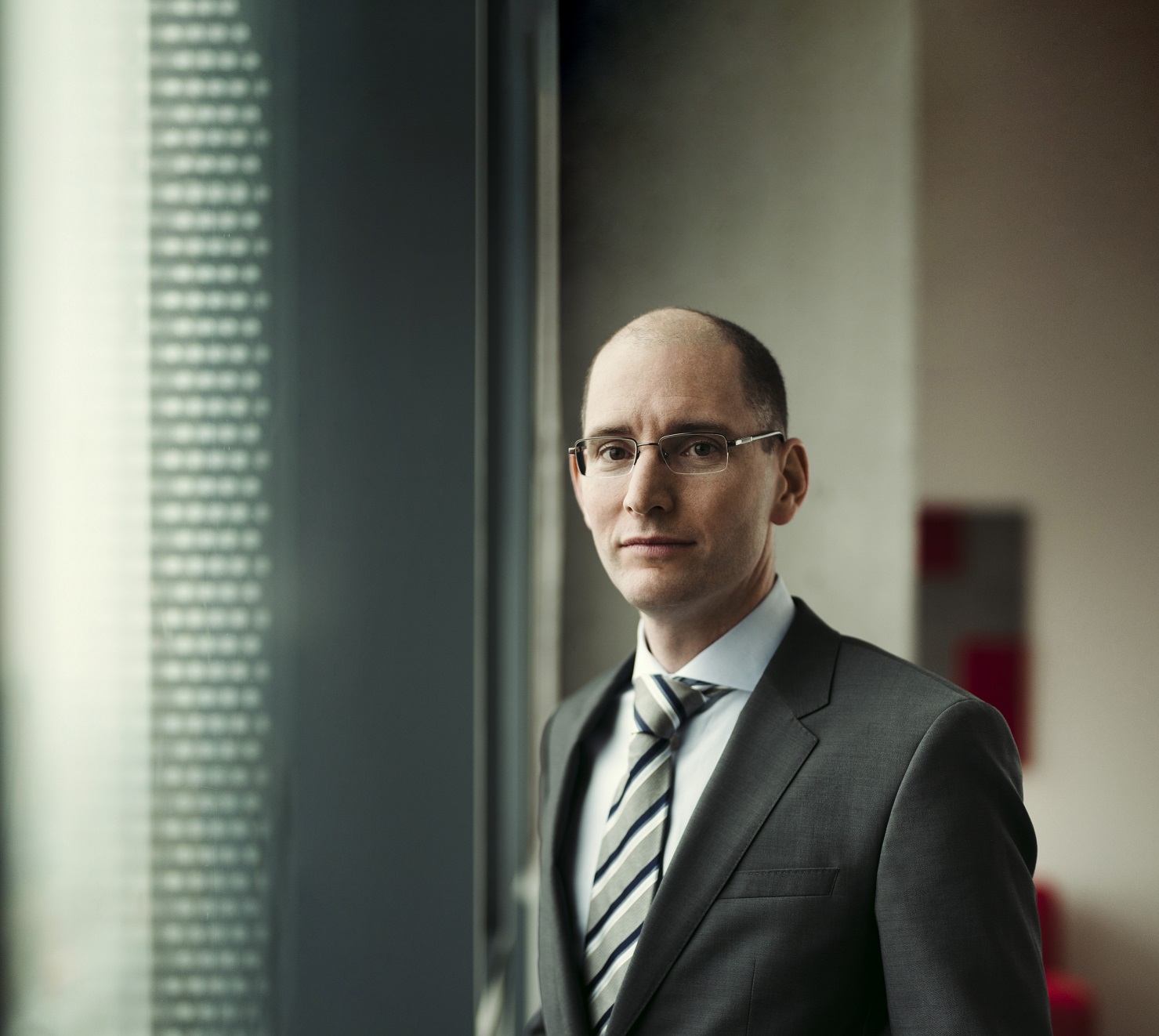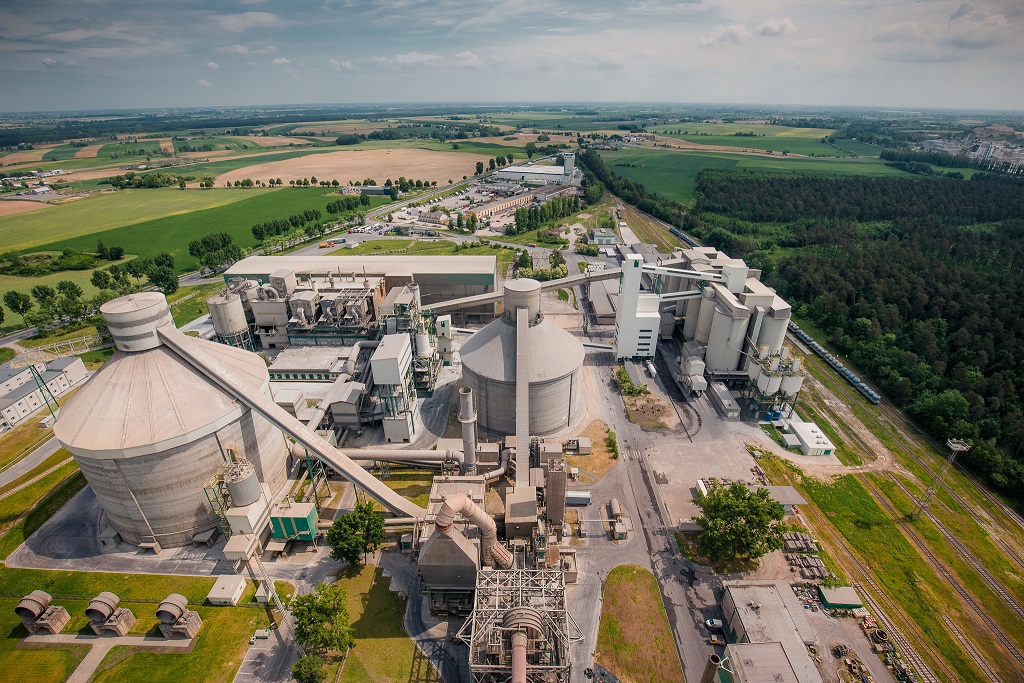

Xavier Guesnu, President of the Management Board of Lafarge Poland
New technologies have taken over many sectors of the economy. It may seem that construction is slightly on the sidelines of this “technological revolution”. Is this changing?
The construction industry is not a leader of the technological revolution, but it adapts to changes and utilizes new tools and innovations to better respond to customers’ needs, improve operations, and handle market and economic challenges, such as the availability of qualified employees, growing prices of energy, or cost of CO2 emission. Solutions are created that allow for greater automation of production processes, such as the development of prefabrication or 3D printing – some of these technologies have a wide range of applications, others are being implemented gradually, but all are designed to help us build better and more efficiently. Technologies that enable the monitoring of buildings throughout their life cycle are also very important: energy consumption, CO2 emissions, their impact on the immediate surroundings. Currently investors analyze not only the costs of the building itself, but also of its subsequent maintenance. What’s interesting, when it comes to the CO2 emissions of buildings, only 25% comes from the production of materials used for their construction, while as much as 75% is emitted during their operation. At Lafarge we search for innovation in all key areas.
Is the use of new technologies just a way to achieve competitive advantage? How does it look at Lafarge Poland?
Innovation in construction is not just modern architecture, but above all solutions that simplify the application process, shorten the construction time, affect the usability of a given construction, ensure quality, low costs of operation, and care for the environment. The industry and clients appreciate every such solution, and at Lafarge we search for innovation in all these areas. Examples: our approach to logistics – Vendor Managed Inventory (VMI) system, transportation monitoring with the use of the iVMS system, products – such as the easily applicable iX for floors, concrete pavement services offered by our company LH Engineering, Gruntar or Airium hydraulic binders – innovative products with unique insulating properties which maintain low material mass and are entirely mineral – 100% recyclable.



We are constantly implementing modern technologies, also in the production process, to ensure the highest quality of our products. We have invested over PLN 400 million in the process of modernization and development of the Kujawy Cement Factory, we improved the quality of products and customer service, significantly reduced energy consumption, increased the use of alternative fuels to 80%, and reduced our CO2 emissions.Another example of the application of new technologies in the production process is the fully automated Quality Monitoring Laboratory launched which became operational last year at the Kujawy Cement Factory, virtually allowing us to check the quality of our products using the Internet.
According to its mission statement, the LafargeHolcim Group considers combating climate change, reducing CO2 emissions, and promoting sustainable construction as very important values. Do you have any specific ideas for such activities?
Both as a Group and as Lafarge Poland we try to actively participate in the debate on climate change. The reduction of CO2 emissions is one of the most important goals included in The 2030 Plan of the LafargeHolcim Group. We undertake a number of activities related to our cement production processes that allow us to gradually reduce CO2 emissions. We increase the efficiency of furnaces and the use of alternative fuels in the production of cement. As I mentioned before, we also invested in the construction of a modern alternative fuels platform at the Kujawy Cement Factory. Thanks to this investment waste, such as plastic, paper, textiles, or cut tires, is converted into energy providing the heat needed to burn clinker bricks. We are also increasing the use of recycled cement additives. In August 2018, together with PGNiG Termika, we opened the Siekierki Ash Separation Plant. The fly ash processed there, created as a by-product of coal combustion, is transformed into high-quality raw materials for the production of various types of cements and concretes with unique parameters. We are constantly investing in the improvement of the energy efficiency of our plants as well as in the research and development of innovations. We develop solutions that improve the energy efficiency of buildings, increase their durability, and reduce the amount of material needed to achieve the desired functionality. We also introduce environmentally friendly products, such as Airium, which has unique insulating properties while maintaining low material mass and 100% recyclability.
Much is said about the future of the construction market. What’s your opinion of the current situation in the industry? Which way should it go to further develop and make sure that there is no significant decline after the boom we are currently experiencing?
The last two years were very interesting, but also demanding for the construction market in Poland. On the one hand, there is a boom in construction, which is certainly positive. But the large accumulation of infrastructure contracts created many challenges for the industry. Moreover, we are also facing challenges associated with inflation and costs of energy, CO2, labor, logistics, which are all expected to increase. At Lafarge we have been preparing for the current situation on the construction market for several years by implementing the solutions and innovations that I have just mentioned. The strategy of Lafarge is aimed at continuous growth and development. This is possible only with a very good understanding of the market and knowledge of our clients’ businesses and needs. We believe that one of the most effective ways to increase our sales is to support the development of our clients’ businesses through active consultancy.
As for the future of our industry, after a period of intense construction there will be time to maintain the investments that are being made now. In the future it will be crucial to have a comprehensive view of construction investments throughout their entire life cycle, i.e. not just the costs of production and construction, but also maintenance and long-term impact of an investment on its surroundings and the natural environment, e.g. CO2 emissions throughout a building’s life cycle, which I have already talked about.
How is Lafarge Poland preparing for the current and future challenges? Have you changed your mission, vision, values, or strategy under the influence of the dynamic market environment and technological revolution?
In March the LafargeHolcim Group introduced its new Strategy 2022. In Poland we also refreshed our mission and vision. We focus primarily on development, profitable and safe growth, and reaching full potential in terms of our cooperation with clients and the development of our employees. We want to be a trusted advisor for our clients, a safe and sustainable company for partners and stakeholders, and a good workplace for the employees.
We are preparing for future challenges in several ways. First, by investing in the development of our facilities and production processes, and thus in the quality of products and sustainable development. Secondly, by developing our range of products and solutions to improve our clients’ building processes and help them develop their business. Thirdly, we are constantly raising our standards in the area of security. The life and health of the people working for us is of primary importance, and how we implement our business assumptions is just as important as the result we want to achieve. Safe work and “Zero accidents” culture are our priorities, and the total accident rate in Lafarge Poland has decreased over the past year more than threefold.
There was recently a lot of controversy around infrastructure construction. The numerous contracts concluded in recent years are now carried out with losses, causing the bankruptcy of many companies in the sector. Is there a solution to this problem? How can companies in the industry protect themselves against such risks?
The long-awaited boom in construction created not only great opportunities, but also difficulties that the entire industry must face. There was an accumulation of road and rail projects, along with all its consequences. New challenges appeared – increasing costs of labor, logistics, and materials as well as a noticeable shortage of employees. It is also a great challenge to maintain the profitability of implemented contracts, especially in the infrastructure construction sector. With the very long tender procedures, lasting even up to a year, the reality at the construction site encountered at the beginning of works is different than at the planning stage. The implementation of projects takes an average of about three years – during this time the costs of materials and logistics increase significantly. Urgent changes to the legislation are needed to enable the adjustment of agreements. I hope that new agreement provisions enabling such adjustment will help solve this problem.
- Place of birth: France – Paris.
- Cuisine: French and, since my wife is Polish, Polish as well – e.g. żurek (sour rye soup)
- Book: Jared Diamond’s “Guns, Germs, and Steel”
- Hobbies: traveling (I have already visited over 30 countries around the world), climbing, and trekking in the Alps, Andes, Atlas mountains, sport (squash and football)
- Dream holidays: Trekking in the Mustang valley in Nepal
- Car: doesn’t matter, as long as it’s safe and provides basic comfort
- Music: my music taste is very eclectic and depends on the mood and occasion, but I can never have enough of Miles Davis!
Last Updated on March 17, 2021 by Karolina Ampulska